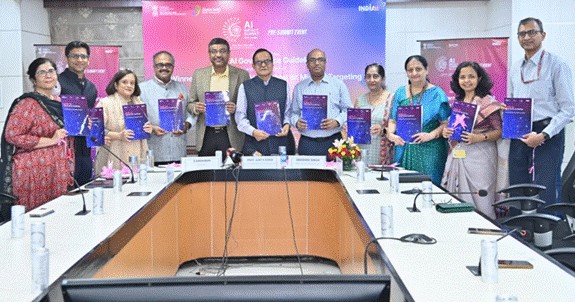Toward $1 Trillion Digital Economy Goal: India’s Telecom Sector Strengthens Digital Backbone with Record Growth, Connectivity Expansion

According to data released by the Ministry of Communications, the sector continues to demonstrate strong growth in broadband penetration, fiber rollout, and mobile subscriber base, supported by a blend of policy reform, public investment, and private innovation.
New Delhi, October 27: India’s telecom sector has recorded remarkable progress in connectivity, service expansion, and indigenous technology development, reinforcing its pivotal role in building a Viksit Bharat and achieving the government’s $1 trillion digital economy target. According to data released by the Ministry of Communications on Monday, the sector continues to demonstrate strong growth in broadband penetration, fiber rollout, and mobile subscriber base, supported by a blend of policy reform, public investment, and private innovation.
India today ranks among the largest telecom markets globally, with more than 1.17 billion telephone subscribers and nearly 900 million broadband users, underscoring the scale of digital inclusion achieved under the Digital India mission. The government’s focus on affordability, accessibility, and indigenous innovation has positioned telecom as a key driver of economic growth, enabling e-governance, fintech, and digital commerce even in remote rural regions.
Union Minister for Communications and Electronics & IT Ashwini Vaishnaw said the sector’s transformation reflects India’s evolution from a technology consumer to a technology creator. “From indigenous 4G and 5G stack development to the rollout of BharatNet Phase-III and the upcoming 6G mission, India’s telecom journey is now defined by self-reliance and global leadership,” he said.
The ministry highlighted several achievements, including the accelerated rollout of fiber-to-the-home (FTTH) networks, establishment of 100 5G labs in academic institutions, and expansion of public Wi-Fi under the PM-WANI scheme, which have collectively strengthened last-mile digital access. Rural broadband penetration has reached unprecedented levels through BharatNet, which now connects over 2.6 lakh gram panchayats, forming the backbone of digital governance and citizen service delivery.
Reforms introduced to improve ease of doing business have also boosted industry confidence. Simplified Right of Way (RoW) permissions, spectrum management reforms, and the Production Linked Incentive (PLI) scheme for telecom manufacturing have attracted substantial domestic and foreign investments. These measures, officials said, are ensuring that India’s telecom ecosystem supports both innovation and employment under the Atmanirbhar Bharat framework.
The government has reinforced its focus on research, innovation, and next-generation readiness through the Telecom Technology Development Fund (TTDF), which has sanctioned over 100 R&D projects worth ₹300 crore in 5G and 6G technologies. The recently launched Bharat 6G Alliance is fostering international collaboration with leading research bodies to make India a co-leader in global telecom standards.
Officials added that India’s telecom growth story is now expanding beyond connectivity to encompass cybersecurity, sustainability, and digital inclusion, ensuring that the benefits of emerging technologies like AI, IoT, and satellite communication reach every citizen. By combining robust infrastructure with digital innovation, the telecom sector is laying the foundation for a resilient, inclusive, and future-ready economy.
As India advances toward its $1 trillion digital economy goal, the telecom industry stands as the backbone of the nation’s digital transformation—linking people, powering businesses, and driving the collective vision of a Viksit Bharat by 2047.








